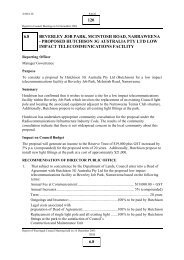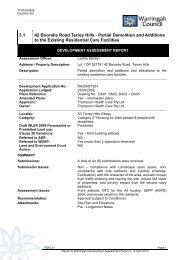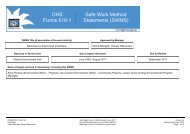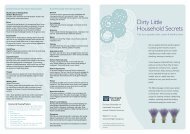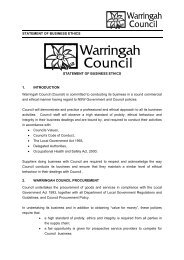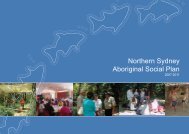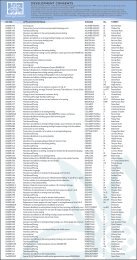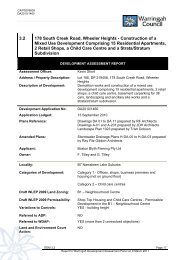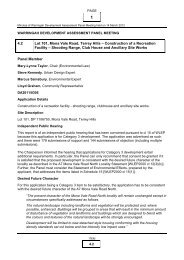Environmental Sustainability Strategy - Warringah Council - NSW ...
Environmental Sustainability Strategy - Warringah Council - NSW ...
Environmental Sustainability Strategy - Warringah Council - NSW ...
Create successful ePaper yourself
Turn your PDF publications into a flip-book with our unique Google optimized e-Paper software.
Bushland and Biodiversity<br />
Biodiversity in <strong>Warringah</strong> incorporates land and<br />
water-based plants, animals and micro-organisms.<br />
Most biodiversity is contained in the region’s<br />
bushland reserves and substantial waterways.<br />
However, significant areas of biodiversity also occur<br />
on private land in urban and rural residential areas.<br />
The local national parks, although extensive, do not<br />
conserve the full range of local biodiversity. Local<br />
indigenous biodiversity in <strong>Warringah</strong> includes 140<br />
recorded endangered and vulnerable threatened<br />
species and ecological communities. This includes<br />
85 plant and animal species, 74 species listed as<br />
migratory and 7 Endangered Ecological<br />
Communities. Of the animals classified as<br />
threatened, 26 have dual listing - having both<br />
permanent and migratory status.<br />
Bushland is fundamental to <strong>Warringah</strong>’s “Bush and Beach” cultural identity. It is<br />
invaluable to the community as a part of our natural heritage and as a scenic,<br />
recreational, educational and scientific resource. Aside from the natural and social<br />
values associated with bushland, it also provides ecosystem services of significant<br />
economic value, such as flood control, erosion control, water-quality control, insect<br />
control, reduction of light and noise pollution, carbon absorption and climate<br />
stabilisation. Bushland provides the landscape context for many of <strong>Warringah</strong>’s<br />
spectacular natural features, such as sandstone escarpments and places of cultural<br />
significance.<br />
Key Challenges<br />
• Loss of core areas of vegetation through development and illegal land clearing<br />
• Fragmentation of bushland and loss of wildlife corridors and habitat areas on both public and private<br />
land<br />
• Pest plants, animals and fungi diminishing biodiversity<br />
• Decline in diversity and abundance of native species (threatened and non-threatened)<br />
• Climate change effects on biodiversity<br />
• Impacts of unsustainable and unauthorised informal recreation activities in environmentally sensitive<br />
areas<br />
• Impact of development pressures on biodiversity and appropriate strategic land-use planning to<br />
address this pressure<br />
• Balancing management of bush fire hazard risk, taking into account both natural values and risk<br />
factors to people and property<br />
• Inappropriate fire regimes<br />
• Water run-off issues<br />
• Inherent difficulties in measuring and monitoring biodiversity<br />
32



